To wash a vintage tweed coat, you'll want to handle it with care. Start by checking the care label for specific instructions, as dry cleaning is often recommended to preserve its structure. If hand washing is allowed, use cool water and a gentle wool detergent, immersing the coat gently without rubbing. Rinse thoroughly and lay it flat on a clean towel to air dry, reshaping it carefully. For stains, identify the type and use the appropriate cleaning method. Avoid direct sunlight when drying, and guarantee you maintain its unique qualities over time. Explore more specific tips and tricks to keep your coat stunning!
Understanding Tweed Fabric

Tweed's rich texture and durability make it a beloved choice for vintage coats, offering both style and functionality. This traditional fabric, mainly made from wool, is renowned for its unique weave and intricate patterns like herringbone and houndstooth.
Because of its cozy warmth and water resistance, tweed was originally crafted in Scotland for outdoor clothing, enabling you to brave harsh weather in style.
When it comes to maintaining your vintage tweed coat, understanding the fabric's nature is essential. Though tweed is robust, it demands special care; improper washing can lead to unwanted shrinking, stretching, or felting of the fibers.
To keep your cherished piece looking its best, you'll want to avoid regular washing methods. Instead, opt for dry cleaning, which preserves the coat's structure and prevents damage to its intricate weave.
Checking Care Labels
Before you plunge into washing your vintage tweed coat, take a moment to check the care label—it's your best guide for maintaining the garment's integrity. The care label provides critical information on how to care for your coat, including whether it should be dry cleaned or if hand washing is an option.
Pay close attention to the fabric content listed on the label; different fibers like wool, cotton, or synthetic blends require tailored cleaning methods to prevent damage.
Look for any symbols or disclaimers that indicate special care instructions—warnings like "dry clean only" should never be ignored.
If the care label allows for washing, don't skip the patch test. Choose an inconspicuous area of the fabric and test your chosen cleaning method to verify colors don't bleed and the fabric holds up.
In cases where the care label is missing or unreadable, it's wise to seek the advice of a professional cleaner who specializes in vintage garments. They can help you determine the safest cleaning method to keep your treasured tweed coat looking its best.
Dry Cleaning Vintage Tweed

When it comes to preserving the beauty and structure of a vintage tweed coat, dry cleaning is often the safest route. The delicate fabric and tailored structure can be easily damaged by water and agitation, making professional dry cleaners your best bet.
Before you head out, inspect the coat thoroughly for any loose threads, missing buttons, or damage. Taking note of these issues guarantees the dry cleaner can address them while the coat is being cleaned.
Once you find a dry cleaner experienced in vintage garments, communicate any specific concerns you might have—whether it's stubborn stains, lingering odors, or embellishments that need special care. A good dry cleaner will appreciate your attention to detail.
Don't forget to check the care label for any unique instructions about dry cleaning, as some vintage pieces may come with specific considerations.
After the coat is dry cleaned, you'll want to hang it on a clean towel to allow it to breathe. This method helps maintain its shape and structure, assuring that your cherished coat stays in excellent condition for many more seasons to come.
Hand Washing Techniques
If you prefer a more hands-on approach to caring for your vintage tweed coat, hand washing can be a viable option, provided you take the necessary precautions.
Begin by checking the care label for specific instructions and conducting a patch test to ascertain color stability.
Follow these steps for a successful cold wash:
- Fill a basin with cool water and add a gentle wool-specific detergent to prevent shrinkage.
- Immerse the coat in the soapy water, gently agitating it without vigorous rubbing. This preserves the fibers and the coat's shape.
- Rinse thoroughly in cool water until all detergent is removed. Avoid wringing or twisting the fabric to prevent distortion.
- Lay the coat flat on a clean towel or drying rack to air dry. Reshape it carefully to maintain its original form, keeping it out of direct sunlight or heat sources.
Spot Cleaning Stains
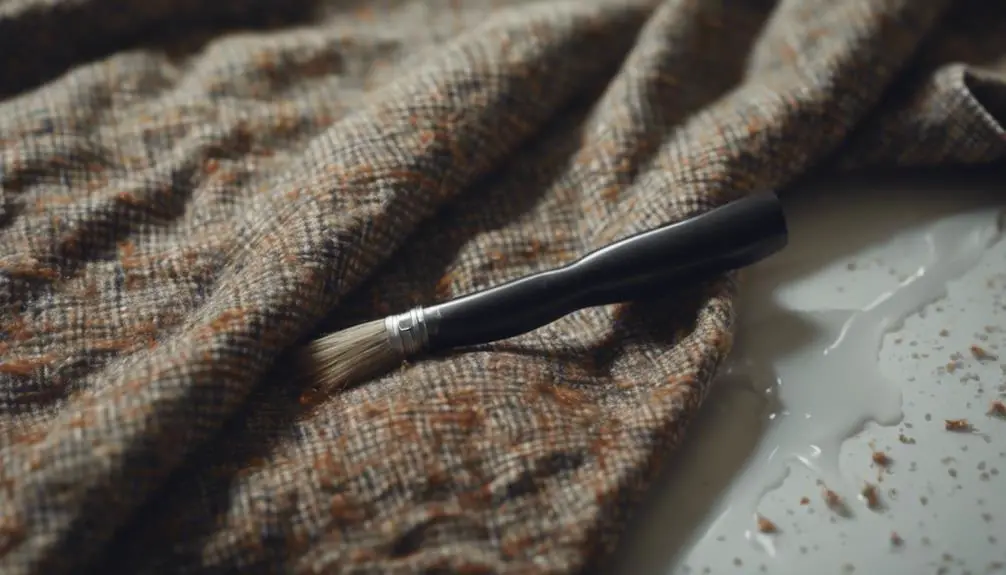
While vintage tweed coats are known for their timeless elegance, they can occasionally fall victim to stains that threaten their beauty. When you notice a stain, the first step is to identify its type—water-based or oil-based—as this dictates your cleaning approach.
For water-based stains, grab a clean cloth and soak it in cold water mixed with a wool-friendly detergent. With a gentle hand, dab the stained area, being careful not to soak it and damage the delicate vintage wool.
If the stain is oil-based, mix a small amount of dish soap with water. Apply this solution using a soft cloth, again using a blotting motion instead of rubbing, which could harm the fabric. Always remember to perform a patch test in an inconspicuous area of the coat first.
After treating the stain, let the area air dry completely. To restore the coat's texture, lightly brush the fabric with a soft brush.
Odor Removal Strategies
Vintage tweed coats can carry the unmistakable charm of the past, but they can also harbor unwanted odors that detract from their elegance.
Fortunately, there are effective odor removal strategies you can use to keep your coat smelling fresh and delightful.
- Air it out: Place your coat in a well-ventilated area for several hours, ideally in cooler temperatures to protect the fabric.
- Baking soda: Sprinkle baking soda generously on the coat and let it sit for a few hours. This natural odor absorber will neutralize smells before you gently shake or brush it off.
- Activated charcoal: Use activated charcoal sachets by placing them in the pockets or hanging them inside the coat. This will help eliminate persistent odors over time.
- Steaming: For light odors, steaming the coat can work wonders. The steam gently lifts the smells without the need for washing, keeping your fabric intact.
Additionally, consider storing your coat with lavender sachets or cedar blocks, which not only deter pests but also impart a pleasant fragrance, helping to keep odors at bay.
With these strategies, you can guarantee your vintage treasure remains as charming as ever.
Reshaping After Washing
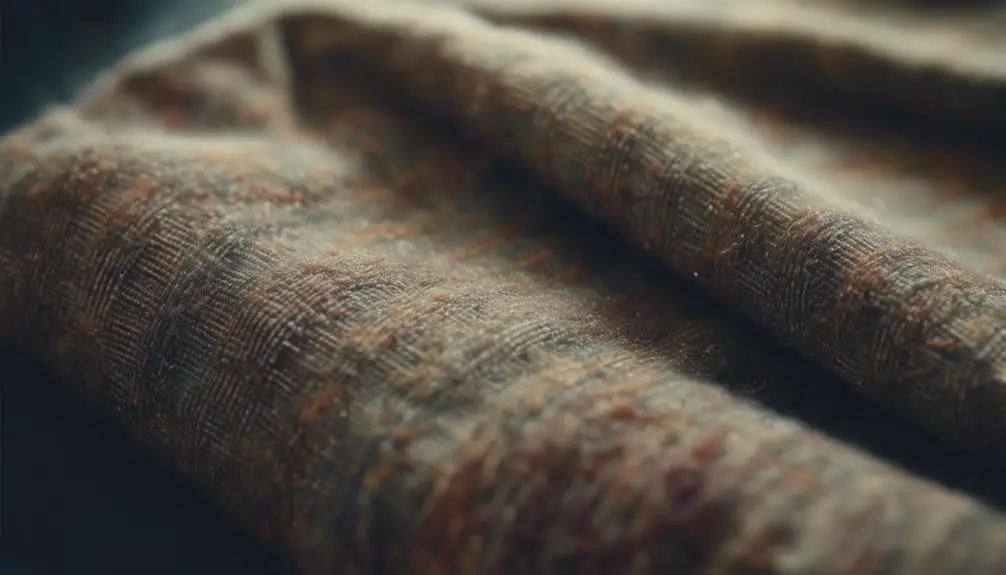
After washing your vintage tweed coat, it's essential to reshape it properly to maintain its elegant silhouette. Start by laying it flat on a clean towel, ensuring the shoulders and lapels retain their original structure. This step is vital for preserving the coat's tailored fit.
While the fabric is still slightly damp, use a tailor's ham to press out any creases. This technique not only smooths the fabric but also helps restore the coat's shape. For wool fibers, a steam iron on a low setting can gently relax the material, allowing it to return to its intended form without the risk of shrinkage.
As you prepare for drying, avoid hanging the coat, as that can lead to stretching. Instead, lay it flat to dry, flipping it occasionally to promote even drying.
If your coat appears misshapen once dry, don't worry! Lightly mist it with water and reshape it again. Gravity will assist the fibers in falling back into place as it dries, ensuring your vintage tweed coat looks as good as new, ready to be worn with confidence.
Drying Methods
When it comes to drying your tweed coat, laying it flat is essential for preserving its shape. To guarantee your clean vintage coat maintains its tailored fit and avoids damage, follow these drying methods:
- Air Dry: Lay your coat flat on a clean towel or drying rack, avoiding direct sunlight and heat sources that can fade the fabric.
- Reshape While Damp: If necessary, gently reshape the coat as it dries. This helps retain its original fit and prevents stretching.
- Gentle Steam Iron: Once the coat is fully dry, use a gentle steam iron on a low setting to remove any wrinkles. Be cautious not to scorch the fabric.
- Breathable Storage: After drying, store the coat in a breathable garment bag. This protects it from dust and moisture, keeping it in pristine condition for your next wear.
Long-Term Care Tips
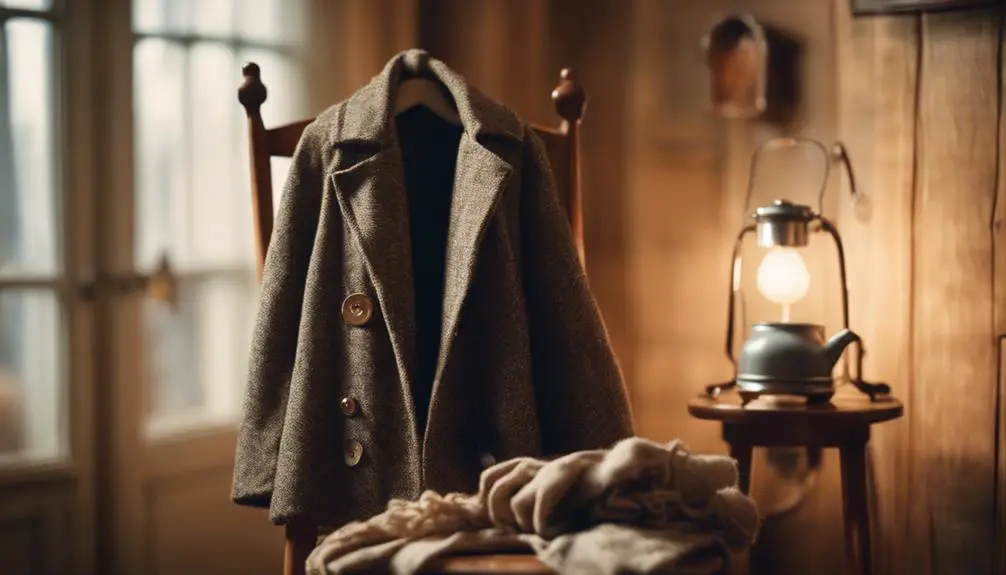
To keep your tweed coat looking its best for years to come, it's vital to set up a solid long-term care routine. Start by storing your vintage coat in a cool, dry place. Utilize breathable garment bags or wrap it in acid-free tissue paper to prevent moisture buildup, which can distort its shape.
Understanding the specific characteristics of vintage fabrics, such as their unique weaving patterns and materials, can further enhance care techniques identifying vintage characteristics.
Regularly inspect your coat for any signs of moth damage or stains, and take immediate action if you spot any issues—prevention is key in preserving vintage fabrics. Instead of frequent washing, freshen it outdoors by hanging the coat in cool air to eliminate odors without risking water damage.
To keep your wool suit fresh in storage, consider placing activated charcoal or lavender sachets nearby. These natural options absorb odors and deter pests, ensuring your coat remains in top condition.
Frequently Asked Questions
How to Wash Vintage Tweed?
When washing vintage tweed, you should opt for dry cleaning to maintain its quality. If hand washing, use cool water and gentle detergent, and always test a hidden area first to avoid damaging the fabric.
How Do You Wash a Vintage Coat?
When you wash a vintage coat, always check the care label first. Hand wash gently in cool water with a mild detergent. If needed, spot clean stains and air dry flat away from sunlight.
Does Tweed Shrink When Washed?
Yes, tweed can shrink when washed improperly. You should avoid hot water and agitation, as these conditions can cause the fibers to felt. Instead, opt for cold water and a gentle detergent to preserve its structure.
Is Tweed Hard to Clean?
Yes, tweed can be hard to clean due to its dense weave and ability to trap dirt. You'll need to handle it gently, as improper cleaning methods can lead to shrinkage and damage.
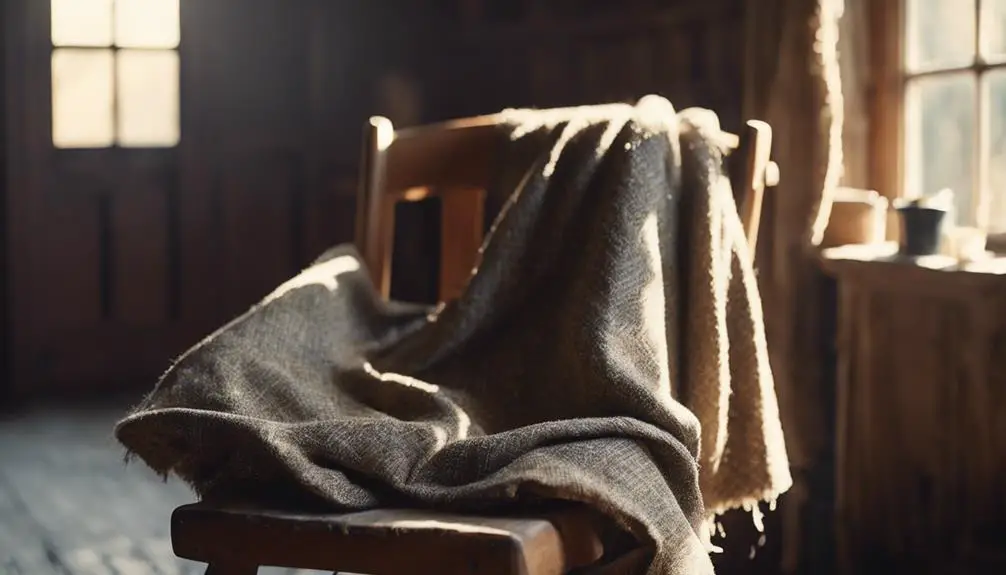


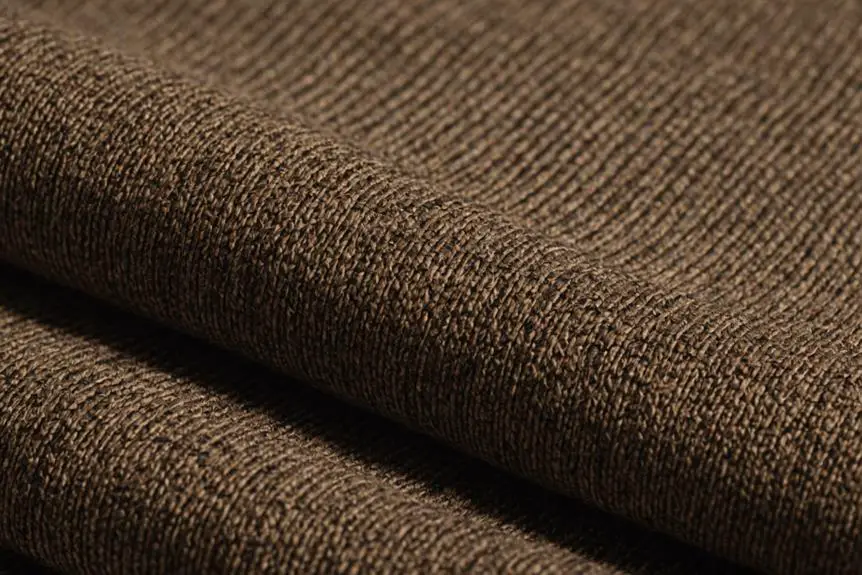

Reading your article helped me a lot and I agree with you. But I still have some doubts, can you clarify for me? I’ll keep an eye out for your answers.
Your article helped me a lot, is there any more related content? Thanks!